Jan Seva Mandal – Bombay Province

NON-FORMAL EDUCATION KIT
I been developing over decades of innovation a nonformal education kit which enables rural children, youth, women and men, from educationally marginalised communities to acquire basic literacy and numeracy skills along with context-relevant information. The kit, in design and operation, makes it possible for local youth from Adivasi and other educational marginalised communities, to tutor or communicate the contents, to relevant sections of chiefly rural communities.
The kit is in use with adaptations for tutorials held in Nashik, Palghar, Nandurbar, Dhule, Raigad District centres networking on grass-root education. The kit serves educational needs of a cross section of rural communities. There is both an academic component that addresses languages learning (Marathi and English), mathematics; further there are social themes; indigenous health learning; and livelihood information. The latter subjects i.e. social themes, health and livelihood, are pertinent to farmers, mahila groups. All these topics are conveyed through videos, charts, texts and handbooks. Regarding the ecology related content of our kit this will be further explained in this note.
ECOLOGY AND THE KIT
Ecology is an intrinsic concern of the Kit’s design. All the teaching learning materials reflect the context of rural learning, depicting the environment as well as the kind of human activities typical of rural areas. This keeps in focus the environment and human activities consonant with environment enhancement. The foundation of a relevant ecology is the association of the environment with every development activity or academic pursuit. I shall enunciate how this ecology concern enters the Kits content.
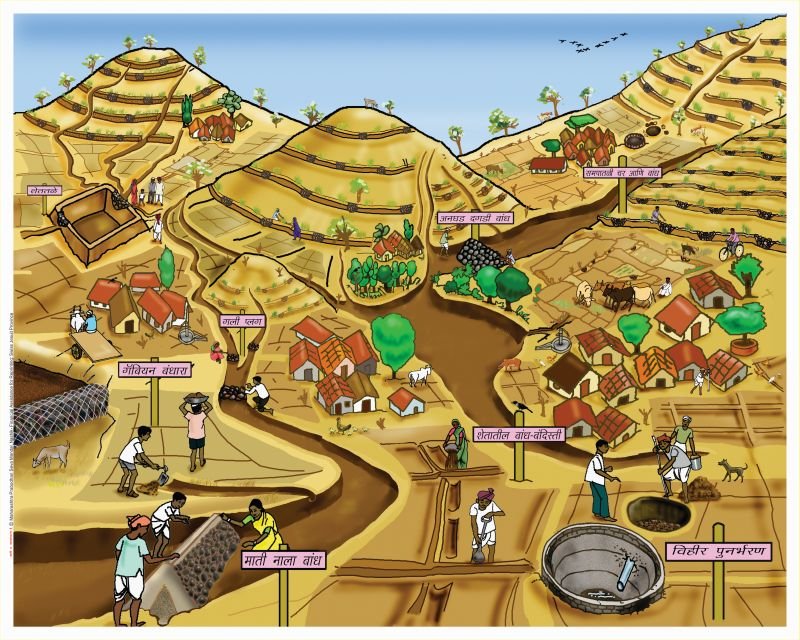
LANGUAGE LEARNING FROM RURAL CONTEXT IMAGES
The Kit’s language learning content is based on images from the Indian rural context with pictures, words and sentences related to the environment. This differs from alien images (ostensibly western) that are often used to convey learning content in languages. The Kit promotes an attitude to learning which sees the rural learners’ context as helpful to develop concepts, to acquire literacy skills, to express in accent and style what is harmonious to the rural context. These topics of the Kit have videos, handbooks, texts and charts for effective communication.
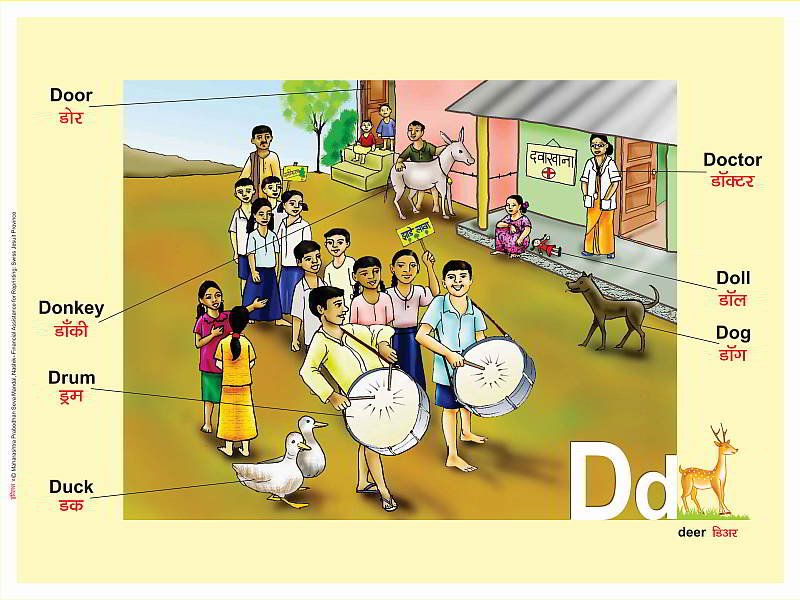
MATHEMATICS
Mathematics too is developed from images of rural villages, the items referred to the four main mathematical operations (viz. addition, subtraction, multiplication, division) can all have potential to include environment information and concerns. Mathematics is conveyed through charts, handbooks, texts (workbooks), and instructional videos for the teachers.

INDIGENOUS HEALTH
The Kits approach to health is through two context relevant exhibits. One on causes of environment pollution and the other on personal and environmental hygiene. There follows a series of charts on common diseases, accidents, nutrition. All the remedies discussed are from nature, specifically herbs. This helps to reinforce the sense of ecology in health care. The health topic is communicated with charts, handbook and video. The Kit’s contents on indigenous health have been found useful for training health activists in village health programmes.
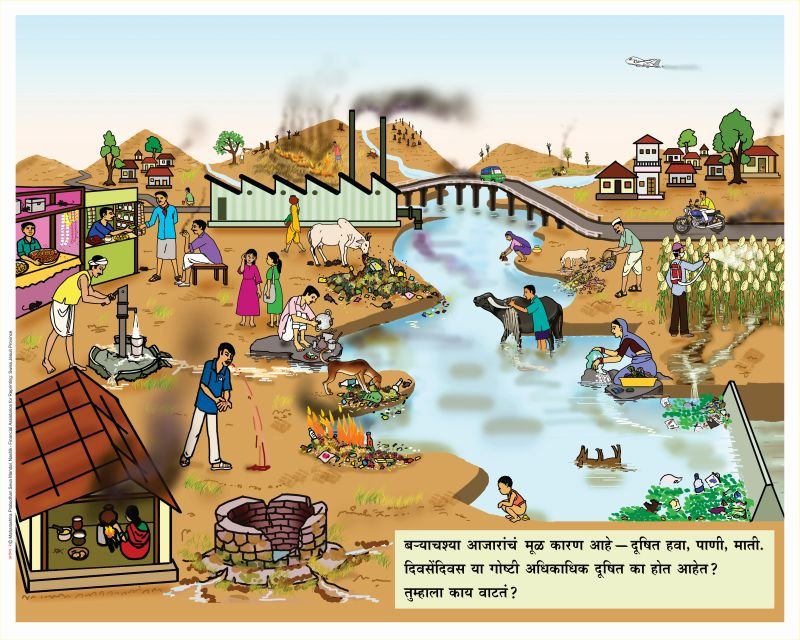
SOCIAL AWARENESS
Of particular importance is the story line in the chart showing that education can also lead to opting for the occupation of agricultural livelihood. There’s a chart on the rain and agricultural cycle. The ideal village is shown as one where the habitat is conducive to health and functioning without polluting activities, commercial or otherwise. The importance of traditional occupations and modern opportunities for income generation are both presented. The importance of village credit unions and the resource being used for agricultural/environment friendly livelihood activities is vividly presented. A colourful handbook guides the teacher and learner in discussing the themes.
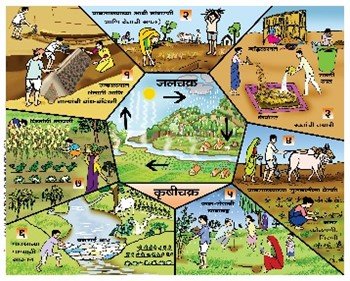
AGRICULTURE, ANIMAL HUSBANDRY, SOIL & WATER CONSERVATION
The most directly related to ecology of the Kits contents are the subjects of Soil and Water conservation, sustainable agriculture and animal husbandry. These subjects are treated with the help of charts, videos, texts and handbooks. Rural learners, especially farmers (male or female) benefit from the Kit contents and communication tools.
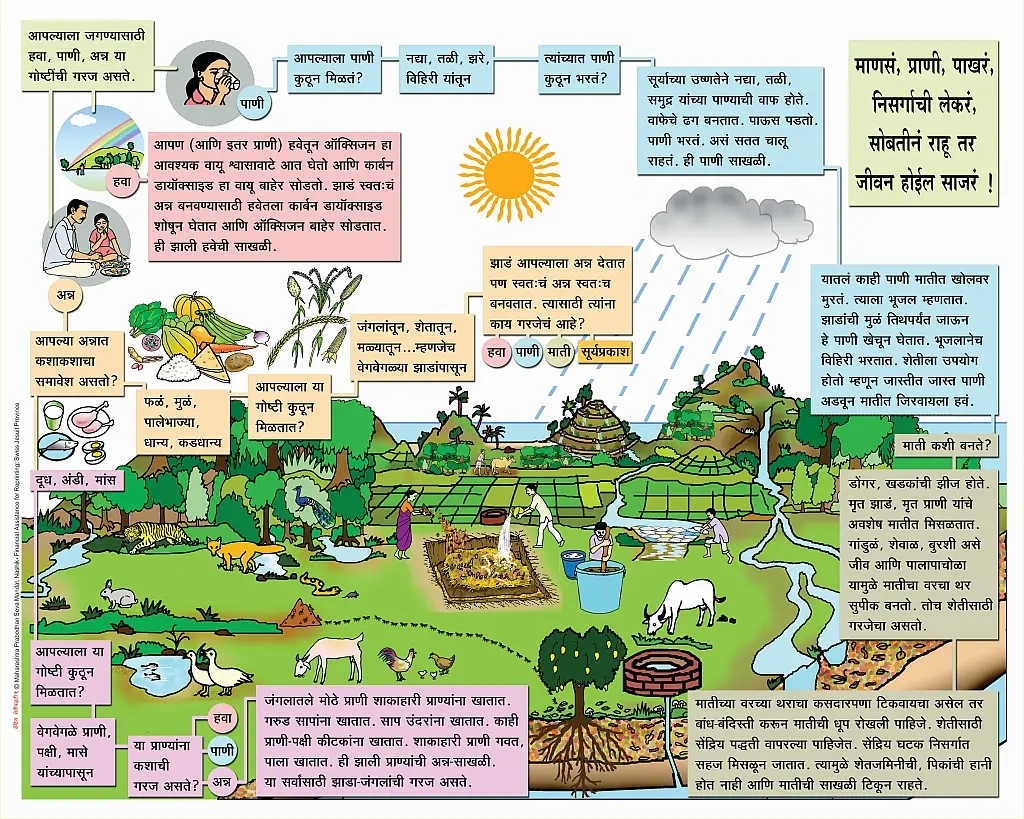
COCURRICULAR ACTIVITIES
Mud modelling, excursions into field and forest, planting of vegetable gardens and on occasion fruit trees, art and craft in which the environment is emphasised for depiction, are some of the added activities that the Kit encourages.

APPLIED ECOLOGICAL PERSPECTIVE TO EDUCATION
Ecology cannot be an abstract ideology. It must be woven into the educational content and communication. We have tried to do so in the rural contexts our educational Kit or “model” is being used for grass root education. Hence the Kit we have developed has sometimes been used in formal Marathi medium schools and boardings.
Given the needed resources the Kit can be republished in English, Gujarati, Hindi for use not only in nonformal education but also in formal institutions.
Godfrey D’Lima SJ
Jan Seva Mandal
Korit Road
Nandurbar-425412
